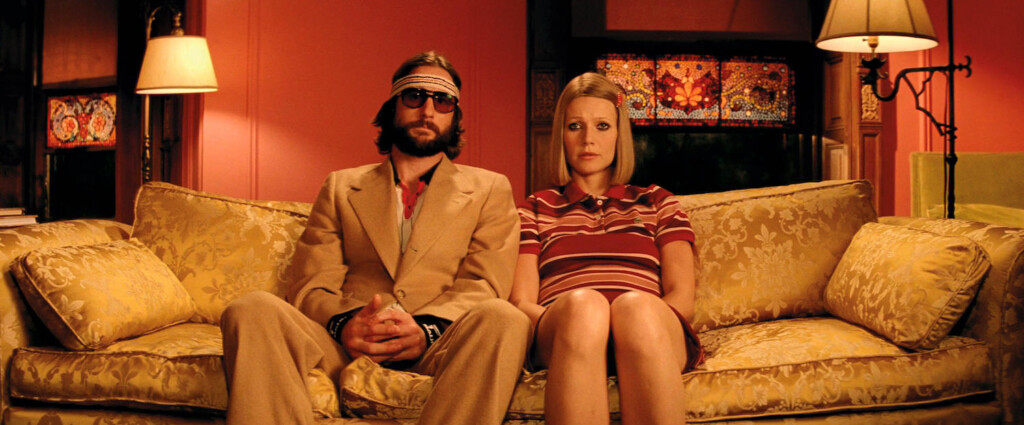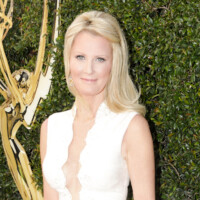The first time I saw The Royal Tenenbaums was not long after its premiere at the New York Film Festival, three weeks after the September 11, 2001 attacks on the World Trade Center. It was billed as a bittersweet comedy about a dysfunctional family of geniuses whose promise had faded.
Its young director, Wes Anderson, was fresh off the success of his second movie, Rushmore. Once again, Anderson wrote the script in collaboration with Owen Wilson, another up-and-coming young talent and a friend from the University of Texas in Austin, where they met in a playwriting class.
At the time I was dealing with the unsettling reality of raising two young children a mile from Ground Zero. An amusing film seemed like the perfect antidote to the fear that had settled over Manhattan. Besides, in those post 9/11 days, we New Yorkers were encouraged to go out to movies and restaurants, to demonstrate our grit and resilience.
Yet, sitting in a theater watching the movie, I felt removed from what was happening onscreen. The studied brilliance of Anderson’s craftsmanship just didn’t connect — or maybe it connected too well. All I absorbed was the underlying theme of loss. The movie’s mannered charm — its impassive insouciance, its silliness, even its brilliant design — felt distant and yet unbearably sad.
Its 20th anniversary finds New York once again under siege, in the grip of a worldwide pandemic. Revisiting the film now, The Royal Tenenbaums elicits my appreciation without resistance. Maybe because we’ve all been living inside our heads, the movie’s literary affect, its quirks and oddities, feels in sync with the weirdness of life in quarantine. Its melancholic off-kilter vision of New York feels oddly normal, seen at a time when reality itself has been knocked sideways.
How fitting to have the film’s storybook narration delivered with deadpan edginess by Alec Baldwin, the actor we now associate as the comic stand-in for our disgraced ex-president. How strangely delightful to see Gwyneth Paltrow, avatar of Goop Health, as Margot Tenenbaum, staring at the world with unblinking intensity through eyes ringed with thick smudgy liner, smoking unfiltered Sweet Afton cigarettes, an extinct Irish brand.

Photo courtesy of AlamyBut then, it’s no surprise that movies strike us differently at different times in our lives. As Oscar Wilde said, “All criticism is a form of autobiography.” The same can be said for film-making. I began to wonder: Where did The Royal Tenenbaums fit into the trajectory of Wes Anderson’s oeuvre, currently consisting of nine feature films (with another about to be released) and several shorts?
While Anderson’s talent was evident from the start, it was The Royal Tenenbaums that established the director’s visual imprint, the style that illustrates a persistent hope for fairy-tale endings despite the understanding that reality can be grim indeed. Frame after frame is stuffed with whimsical oddities and eccentric characters whose manner could easily be replicated in a cartoon. (As would happen later, with Anderson’s marvelous stop-motion film adaptation of the Roald Dahl children’s novel, Fantastic Mr. Fox, and the heart-wrenching Isle of Dogs.)
Anderson has become the object of cultish fascination, both for his works and his public persona. Over time, he has come to look like a character he might have created for one of his films, a lanky beanpole dressed in patterned shirts, neckties, and too-small jackets, usually corduroy or tweed, all presented in a distinctive color palette, even at 51 looking like a gawky adolescent boy wearing his big brother’s hand-me-downs.

Photo courtesy of AlamyThe cult is hardly an exclusive club. Many of his movies have done well financially [The Grand Budapest Hotel is the top example, earning $172.9 million worldwide], meaning considerable numbers of people have watched them. But it is still a rarefied one. While fans (including me) treasure this cockeyed genius who finds beauty and humor amid existential crises, others can find his films too precious, too trapped inside the hothouse of their creator’s idiosyncratic brain.
A.O. Scott of the New York Times had liked Rushmore but found The Royal Tenenbaums annoying.
“Like the songs and the reiterated portrait-style shots, the witty costumes and gorgeous interiors become suffocating, and the whole enterprise begins to feel more arch than artful, a gilded lily that spoils its perfection by insisting on it,” he wrote. Later, however, the critic succumbed to Anderson’s charms. “As a sometime grumbler and longtime fan, I found myself not only charmed and touched but also moved to a new level of respect,” he wrote in his review of The Grand Budapest Hotel.
He hasn’t been alone in his evolving admiration. Anderson’s scores on Rotten Tomatoes — where audiences weigh in along with critics — have steadily increased over the years.
When The Royal Tenenbaums was released, Anderson had just emerged as a promising creative force to be reckoned with. In their mid-twenties, he and Wilson had pitched a goofy script to James L. Brooks (whose credits include the classic TV series The Mary Tyler Moore Show, Taxi, and The Simpsons, plus successful movies including Terms of Endearment and Broadcast News) that became Bottle Rocket. The 1996 independent film starring Wilson and his brother Luke didn’t quite ignite, but it did bring its 26-year-old director to the notice of executives at Disney’s Touchstone Pictures. Three years later the studio released Rushmore, Anderson’s breakthrough comedy, about an odd-ball overachiever who sees the world through a different lens than almost everyone else.
Critics praised the film and audiences went to see it. Anderson attracted the attention of East Coast tastemakers, charming interviewers with his cinematic erudition and his cultivated blend of wide-eyed chutzpah and preppie courtliness. He appeared on PBS’s Charlie Rose show, back when that was considered a coup.


Photos courtesy of AlamyShortly after Rushmore’s opening, he told the New York Times about his intense desire to win the approval of Pauline Kael, the legendary film critic for The New Yorker, even though it was seven years after she had retired. Being an Anderson anecdote, the story is ironic and self-consciously self-deprecating.
“I genuinely don’t know what to make of this movie,’’ Kael told the puppyish 28-year-old, after he screened it for her at a theater near her home in Great Barrington, Massachusetts. Also: “Wes Anderson is a terrible name for a movie director.”
But nobody ever said that after The Royal Tenenbaums, the hit which clarified the signature look that became associated with his work. Equally important, from a career-building point of view, it was a box office hit relative to its cost. Not quite Harry Potter, but a more than respectable return on investment.
“Apart from his gifts of visualization, Anderson’s determination to get his own way — his relentless tenacity — marks him conclusively as a born picture-maker,” wrote Peter Bogdanovich in his introduction to the published script of The Royal Tenenbaums. “This is not a question of ego either, but rather an essential character trait in a field where 300 different opinions and 500 alternative possibilities have to be dealt with quickly and efficiently.”

Photo courtesy of AlamyThat assessment was echoed by people who worked with him right from the beginning. The husband-and-wife team of David Wasco and Sandy Reynolds-Wasco did the production design for Wes Anderson’s first three movies. They had been in the business more than 15 years and had worked with many directors, including Quentin Tarantino, when they were hired for Bottle Rocket. From the get-go, they understood that this young director, more than any they had worked with (including Tarantino), had very specific ideas about how he wanted things to look like.
On the first two films, the director created his own storyboards, with sketches he drew himself. By the time he made Tenenbaums, the planning became more sophisticated. Eric Chase Anderson, the director’s brother and frequent collaborator, created scene-by scene storyboards as precise as a blueprint. And the script, again coauthored by the director with Owen Wilson, contained remarkably detailed stage directions — the color of someone’s pajamas, the design of wrapping paper on a present, the type size on a magazine article.
“Wes was careful to tell us as much as he could about what each thing should look like,” Reynolds-Wasco told me. “When we first read the script, it became sort of a no-brainer because at least 50% of every page is just descriptions.”
In the same way that the designers were expected to fulfill the director’s precise vision, the actors were chosen to play parts Anderson had written for them.

Photos courtesy of Alamy“He had the whole film finished in his head before he started,” Paltrow told an interviewer. “It’s almost like it’s an animated film, and you just fold yourself into the character and inhabit this world.” Anderson reinforces this idea visually by having actors stare directly at the camera from the middle of the frame, as though silently asking that elemental question: Why am I here?
So even though Anderson took pains to find great locations in New York while making The Royal Tenenbaums, the New York he wanted to show had to match that city inside his head. His aesthetic was influenced by a friend and later a frequent collaborator, Hugo Guinness, a blueblood British expat and artist who lives in Brooklyn with his painter wife, Elliott Puckette, and their two daughters. Guinness’s actual house proved to be too narrow to accommodate a film crew, but the director found a suitable alternative on Convent Avenue in Hamilton Heights, in a turn-of-the-twentieth-century redbrick fortress of gables, dormers and spires. The house “kinda has a storybook quality to it,” Anderson said at the time, and he also liked that it was on an unusually small block: “There’s a dead end there, so you can’t see any further than a short distance.”
There would also be no soaring establishment shots of the glittering city, nor gritty streetscapes. To underscore his intention, he designed the film as a storybook unfolding, complete with chapter headings and Alec Baldwin’s narration.
“We were not hiding the fact that we were in New York, but we were not specifically in New York,” explained Wasco. The design team created license plates and street signs; the director purposefully avoided having iconic images like the Statue of Liberty sneak into the frame. “We were doing a Wes Anderson take on New York, meaning it’s done in a kind of a magical way.”
The Wascos knew from working with the director before that his New York City would more likely be found in old films and New Yorker covers and sophisticated children’s books like Eloise than in guidebooks. He talked about The Magnificent Ambersons by Orson Welles and told them to look at Juliet of the Spirits, Italian director Federico Fellini’s first color film, described by the New York Times critic in 1965 as a “gorgeous, sometimes garish immersion in a rainbow palette [that] invites you to contemplate the symbolic vibration of every hue in its teeming, overcrowded canvas.” Fellini’s colors captivated Anderson, but there were less obvious elements that interested him as well.

Photos courtesy of Alamy“Sometimes it was for silly little details,” recalled Wasco. “Like he wanted us to look at the curtains in a window in one scene.”
In subsequent years, the locales changed and the artistry deepened, but the sensibility has remained constant. Anderson would go underwater for The Life Aquatic, to India for The Darjeeling Limited, to the fictional Eastern European country Zubrowka (filmed in Germany and the Czech Republic) for The Grand Budapest Hotel. Sometimes he skipped reality altogether, creating the exquisite, animated universes of Fantastic Mr. Fox and Isle of Dogs.
Anderson’s next film, The French Dispatch, takes place in the fictional French city of Ennui-sur-Blasé. Starring Wes Anderson stalwarts including Bill Murray, Owen Wilson and Jason Schwartzman, as well as heartthrob Timothée Chalamet, the new film follows three stories from U.S. expatriates working for a make-believe weekly journal whose aesthetic is modeled on — quelle surprise! — The New Yorker.
The movie, the director’s tenth feature, had been scheduled for 2020 but was delayed like so much else. Perhaps appropriately, its debut this year will coincide with the 20th anniversary of The Royal Tenenbaums, a neat bookend for evaluating the director’s trajectory.
In the trailer for French Dispatch, immediately recognizable as an Anderson film, Murray, playing the magazine’s editor, instructs a writer, “Just try to make it sound like you wrote it that way on purpose.” Intentional or not, the instruction sounds like an inside joke, coming from a writer-director who tries to leave so little to chance.





